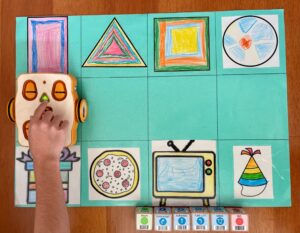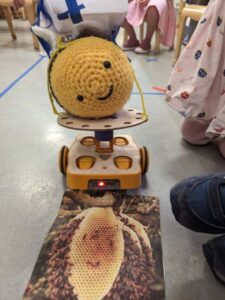Robotics and Mathematics Go Hand in Hand
Contributed by: Celestino Magalhães, Teacher of Robotics and Coding, Externato de Vila Meã, Portugal, https://externatovilamea.pt/

Our KIBO Ambassador, Celestino Magalhães, shares a few examples of how he uses KIBO with math instruction with his young learners. He says, “The use of KIBO robots allows 5-year-old children to explore and create different scenarios, thus exploring their critical thoughts in solving real problems and situations, exploring different solutions to the problem, managing to create valid and profound knowledge, through practical experiences.”
With the introduction of robotics in an educational environment students are able to:
(1) think critically
(2) imagine several solutions for solving the same problem
(3) select and plan the implementation of the chosen solution
(4) build and test the results, presenting them if the solution works or reformulating them, because if a robot did not perform as expected, the student can adjust or program it by redoing the entire process.
“Students integrate robot kits, composed of parts, motors, sensors, to achieve deeper learning of technology, providing moments for the student to learn by doing, by themselves, in a tactile way, relating his ideas to the artifacts, and where students can visualize immediate results.”
Below are examples of his students using KIBO:
1) Math – The use of KIBO robots allow children to explore and create different scenarios, exploring their critical thoughts in solving real problems and situations, in collaboration with Mathematics, exploring different solutions to the problem.
2) Within Regular Instruction – Integrating KIBO in an educational context allows the creation of diversified learning scenarios, which combine technology with artifacts, allow developing creativity, support process planning to help students build their own knowledge.

























